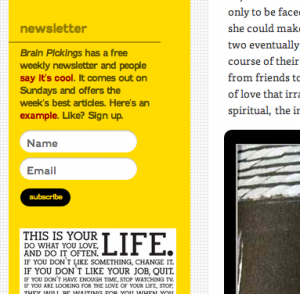Brands
Why Your View that Email Is a Bad Marketing Tool Is Wrong
Patrick McKenzie, a self proclaimed anti-spam geek, was once convinced email marketing was worthless — but admits this subject line got him to open an email: “RE: Welcome to Twilio.”
 It was a simple trick that made him feel like he’d gotten a personal reply from the company’s founder — but he calls it one part of a well-executed email campaign that kept the service on the forefront of his mind and eventually led to him using Twilio to build a business.
It was a simple trick that made him feel like he’d gotten a personal reply from the company’s founder — but he calls it one part of a well-executed email campaign that kept the service on the forefront of his mind and eventually led to him using Twilio to build a business.
Many professionals approach their desks each day with a dedication to churn through all emails and reach inbox zero, effectively regarding emails as an annoyance and sometimes bringing marketers to write off email for their own business completely.
But email still ranks up with search as the most popular activity on the Internet and when it comes to changing behavior (read: purchasing), A/B tests between email and blog marketing beg marketers to reconsider, McKenzie writes.
How did email earn such a negative perception? We all know that there are good reasons why people grimace at email. But that doesn’t mean the whole enterprise is doomed.
Email marketing services such as Mailchimp will suspend a company’s account if it seems to be importing email addresses from users who didn’t knowingly sign up. There’s an easy unsubscribe button, but there’s also a report abuse button — so marketers may feel they need to tread lightly on people’s inboxes.
Sometimes signup forms include a message such as “I promise I send newsletters barely ever,” as if apologizing for content in advance. This may be a fitting disclosure for someone who truly plans to send few emails, but it also contributes to the feeling that emails are somehow bad.
Of course, the loudest people on Twitter are not shy about their hatred for emails, sometimes complaining that answering emails could be a full time job. But the reason a fuss is made about emails is because, unlike an RSS feed or blogroll, your job requires you to pay attention to emails — putting a marketing message right next to a personal note from someone’s boss can raise the perceived value of that marketing email.
While brands might shift resources to shiny new social media channels, there’s proof they haven’t given up on email completely.
A recent report from Econsultancy reveals that 70 percent of respondents rate email as having “excellent” or “good” ROI — no other channel except SEO was rated so high.
A company without a marketing plan for email should do one thing immediately: begin collecting emails on its website.
Before Fashioning Change launched, or even built out a product, founder Adriana Herrara put up a splash page with a widget to collect emails, she told a Geek Girls Meetup in San Diego. When she started getting emails from strangers, she knew her idea was getting traction.
 Your email sign-up form can produce vastly different results based on copy and presentation. One great example is on BrainPickings: It’s simple, and confidently offers the value proposition. An immediate incentive — a free ebook download or access to a video tutorial — can also bring in subscribers.
Your email sign-up form can produce vastly different results based on copy and presentation. One great example is on BrainPickings: It’s simple, and confidently offers the value proposition. An immediate incentive — a free ebook download or access to a video tutorial — can also bring in subscribers.
Email can be a high-touch communication tool while passively collecting user information.
Consider this example from McKenzie: He was watching his newsletter signups in real time, and someone he respected who he’d like to be in contact with signed up. From there, he could send a direct message and say “Hey, I saw you signed up. I’m the CEO. What questions can I answer for you?”
In personal experience, I’ve done this with members of the press who signed up to hear about the mobile application I worked with, and it’s led to an ongoing relationship. I’ve also used newsletter analytics to discover which employees of our competitors were not only receiving our newsletter, but how many times they opened the email and what they clicked on.
Other trends in email marketing include personalization and segmentation. If you use an in-house email system, you can target email to behaviors — think, “We haven’t seen you in two weeks — here’s what you’re missing out on,” to bring users back to a product.
Don’t think of the emails hitting spam filters, not opened or not acted on — a percent will make it past those hurdles, and of those many will result in sales.
As McKenzie says, email is a numbers game and the numbers are motivational.
Image courtesy of Steve 2.0/flickr
Get better at your job right now.
Read our monthly newsletter to master content marketing. It’s made for marketers, creators, and everyone in between.




